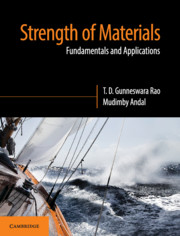Fracture Mechanics
Fracture mechanics studies the development and spreading of cracks in materials. The study uses two techniques including analytical and experimental solid mechanics. The former is used to determine the driving force on a crack and the latter is used to measure material's resistance to fracture. The text begins with a detailed discussion of fundamental concepts including linear elastic fracture mechanics (LEFM), yielding fracture mechanics, mixed mode fracture and computational aspects of linear elastic fracture mechanics. It explains important topics including Griffith theory of brittle crack propagation and its Irwin and Orowan modification, calculation of theoretical cohesive strength of materials through an atomic model and analytical determination of crack tip stress field. This book covers MATLAB programs for calculating fatigue life under variable amplitude cyclic loading. The experimental measurements of fracture toughness parameters KIC, JIC and crack opening displacement (COD) are provided in the last chapter.
- Discusses the difference between strain energy and potential energy release rates
- Focusses on analytical methods, numerical methods and experimental methods based on photoelasticity
- Covers MATLAB programs for calculating fatigue life under variable amplitude cyclic loading
Product details
July 2017Adobe eBook Reader
9781316691854
0 pages
0kg
This ISBN is for an eBook version which is distributed on our behalf by a third party.
Table of Contents
- List of figures
- List of tables
- Preface
- 1. Introduction
- 2. Linear elastic fracture mechanics
- 3. Determination of crack-tip stress field
- 4. Crack opening displacement, J integral, and resistive curve
- 5. Determination of stress intensity factors
- 6. Mixed mode brittle fracture
- 7. Fatigue crack growth
- 8. Elastic plastic fracture mechanics
- 9. Experimental measurements of fracture toughness data
- References
- Index.





